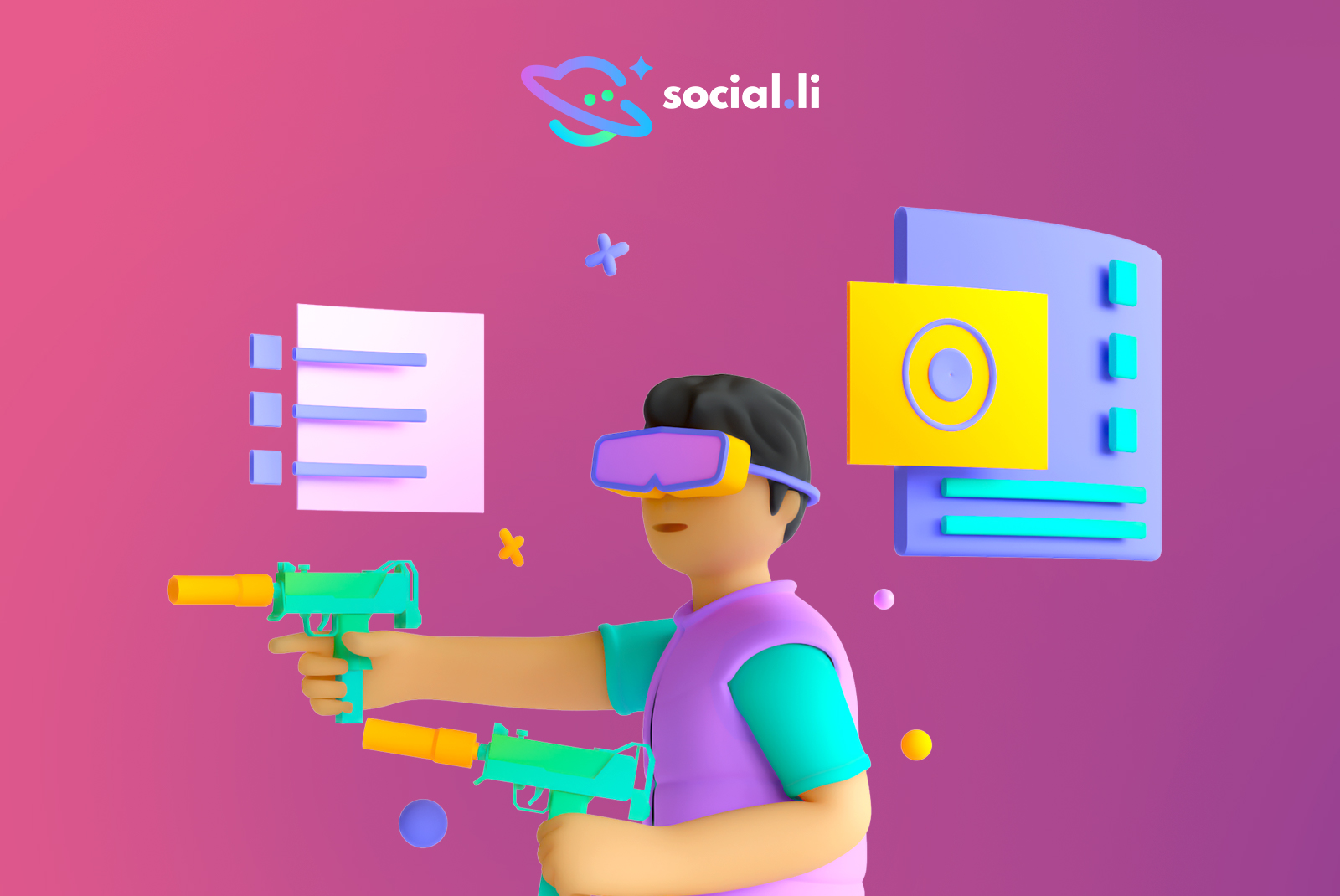As humanity continues to evolve, so does the way we interact with the world around us. The emergence of Augmented Reality (AR) and Virtual Reality (VR) technologies has opened a new door of opportunity, allowing us to experience the world in ways that were once unimaginable.
By combining the two, these technologies become the foundation of the metaverse – a virtual world that is as expansive and immersive as our own physical world. With AR and VR at its core, the metaverse will enable us to explore, connect, create, and experience in a new and exciting way.
What is AR?
Augmented reality (AR) is a technology that expands our physical world, creating enhanced experiences by overlaying digital information in the real world. It augments the environment and lets virtual elements interact with the real world. This can be experienced through devices such as smartphones, tablets, smart glasses, and head-mounted displays. AR blurs the boundaries between what’s real and what’s computer-generated, by adding graphics, sounds, and touch feedback to the natural world.
This technology can be used in a variety of ways, including providing more information about a particular environment, enabling users to interact with virtual objects, playing interactive games, and creating immersive experiences. It has been transforming the way we interact with the world and has the potential to revolutionize the way we learn, work, and play in the future.
Popular example: Pokémon Go
What is VR?
Virtual Reality (VR) is a computer-generated 3D environment in which users can interact with virtual objects, characters, and environments. It can be used to simulate real-world activities such as exploring a virtual world, playing a game, or performing surgery. It is typically experienced using a head-mounted display (HMD) or a hand-held controller. The technology can be used to create immersive and interactive experiences. Virtual Reality (VR) is a powerful tool for enhancing user experiences and creating immersive, interactive environments.
It can also be used to enhance traditional activities such as gaming, shopping, education, and entertainment. VR is becoming increasingly popular and is being used in a wide range of industries, including healthcare, manufacturing, entertainment, and education.
Role of AR and VR in the Metaverse
Augmented Reality (AR) and Virtual Reality (VR) have become essential tools for creating the metaverse. AR and VR are used to create immersive virtual worlds and experiences that allow users to explore and interact with virtual objects and environments. AR and VR technology can be used to create interactive 3D environments, allowing users to virtually explore new places, interact with objects and characters, and even manipulate their environment. AR and VR can also be used to create virtual events and experiences, allowing users to host virtual concerts, conferences, and other events in the metaverse.
In addition, AR and VR can be used to create virtual education experiences, allowing users to explore and learn about new topics and subjects within the metaverse. Finally, AR and VR can also be used to create virtual gaming experiences, allowing users to explore and play within the metaverse. AR and VR technology have become essential tools for building the metaverse, allowing users to experience virtual worlds and events in a realistic and immersive way.
The possibilities for AR and VR in the metaverse are endless and have the potential to revolutionize the way people interact with each other and the world around them. As technology advances and more people become connected, the metaverse will become an even more powerful tool for exploration, entertainment, and education.
Difference Between AR and VR
Augmented Reality (AR) and Virtual Reality (VR) are technologies that have been gaining popularity in recent years. While they both offer immersive experiences, they are different in some key ways.
| Augmented Reality | Virtual Reality |
|---|---|
| AR involves overlaying digital information on the real world. | VR creates a completely artificial environment replacing the real world. |
| In AR, the user can see the real world, but it is augmented with digital elements, such as graphics, text, or video. | In VR, the user is transported to a completely digital world, and the real world is hidden from view. |
| AR is often used in mobile apps and games. | VR typically requires the use of a headset or other specialized hardware. |
| AR is more accessible and can be used in a wider range of situations. | VR provides a more immersive and complete experience. |
| Users have a sense of being in the real world. | Users are completely immersed into the action. |
Overall, AR and VR are two different technologies that can be used to create immersive experiences for users. While they have some similarities, they also have key differences in terms of the way they work and the types of experiences they offer.
Final Thoughts
The potential of AR/VR as mainstream technologies is vast, from revolutionizing how we shop and interact to providing new ways to explore, play and learn. With the emergence of the metaverse, the possibilities for technology are even greater. As technology continues to evolve and become more accessible, AR/VR stands to become an integral part of our lives, enabling us to experience entirely new worlds and engage in activities we only dreamed of before. By creating a more immersive and interactive environment, AR/VR technologies can help bridge the gap between the real and virtual and open up a world of possibilities.










Your Own Metaverse
Interoperable Web 3 Metaverses Built on Layer-1 Blockchain.